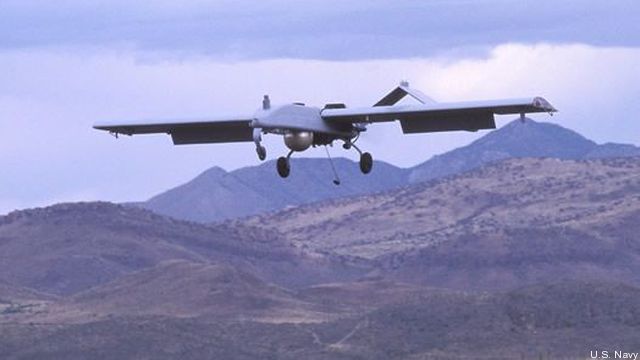Drone Collides Over Afghanistan With U.S. Warplane
Posted on

Washington: A relatively small unmanned aircraft struck a C-130 cargo plane over Afghanistan, injuring no one but raising questions anew about whether drones can fly safely in American airspace.
For more news and information on the swiftly-changing defense industry, please sign up for the Breaking Defense newsletter. You can also catch us on Twitter @BreakingDefense.
The drone, a Shadow made by a unit of Textron Systems, boasts a maximum operating altitude of about 15,000 feet but usually operates at lower altitudes to perform its tactical reconnaissance mission.
No one was injured in the collision, but the C-130 did make an emergency landing, according to the Wall Street Journal, which broke the story. The 12-foot drone went down. No word yet on its condition or whether anyone on the ground was injured. The Shadow was probably flown by an Army or Marine unit. Ironically, the unmanned plane struck the very type of manned plane that usually carries it into action — one of Lockheed Martin’s C-130s.
Defense companies, eager to expand their market, have pressed the Federal Aviation Administration for years to open U.S. civil airspace to unmanned aircraft.
“The use of unmanned systems and the use manned systems in the same airspace is not going away,” Dave Vos, senior director of control technologies at Rockwell Collins, said today at the Association of Unmanned Vehicle Systems International’s annual conference. “It is only going to get more prolific” as technology advances. The strike is generating much conversation at the conference, the biggest drone event in the world.
The FAA, concerned about drones — which don’t boast Traffic Collision Avoidance Systems such as large airliners use — has moved slowly and cautiously.
“We are going to make sure we are going to guarantee the safety of other pilots and people on the ground,” Les Dorr, an FAA spokesman, told Breaking Defense. He said that several studies “indicate you could not use TCAS to reliably have other aircraft detect the unmanned aircraft.”
When I pressed Dorr on the possible significance of the collision to FAA efforts to open the skies, he noted that “there is a world of difference between operations in Afghanistan and those in the U.S.” It is, he said, “like comparing apples and Oldsmobiles.”
“Wholesale integration” of unmanned aircraft into U.S. airspace “is a number of years away,” Dorr said. However, the agency plans to publish a draft rule “late this fall” for rules governing “small unmanned aircraft” of less than 55 pounds.
Today, a drone operator must get a special experimental certificate to fly in U.S. civil airspace. As of a year ago, less than 80 such permits had been granted. Military or other government flights can get a waiver to operate for a set period of time in a carefully defined area.
As the FAA website notes: “Due to the UASs inability to comply with ‘sense and avoid’ rules, a ground observer or an accompanying “chase” aircraft must maintain visual contact with the UAS and serve as its ‘eyes’ when operating outside of airspace that is restricted from other users.”
Also on Aol Defense:
Subscribe to our newsletter
Promotions, new products and sales. Directly to your inbox.
